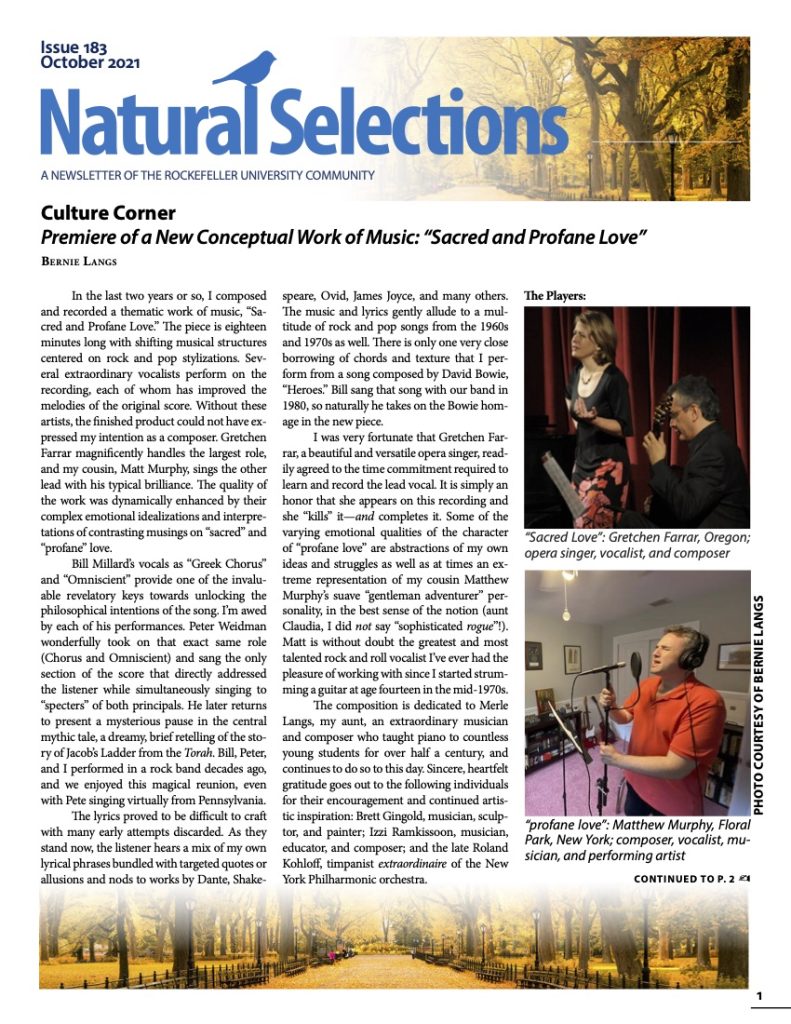Part VII: Edward Lawrie Tatum, 1958 Prize in Physiology or Medicine
By Joseph Luna
It started, on paper at least, with butter. The chemical microbiology of dairy products was “certainly getting hot” as one professor dryly wrote to George Beadle, who in 1937 was starting his lab at Stanford University. Beadle, a plant geneticist who had recently switched to the fruit fly Drosophila melanogaster as a model organism, was looking for a good biochemist to join him with genetics research. He offered the job to 28-year-old Edward Tatum, a University of Wisconsin-Madison Ph.D. who had just spent a year in Utrecht, Netherlands, to study the odd mix of genetics in flies and the chemistry of butter. Tatum had come from a science family (his father was a chemistry professor) and was interested in genetics, but both father and son were concerned with the hybrid role of Beadle’s offer: amongst microbiology, biochemistry and genetics, Tatum stood a good chance of ending up an academic orphan, disowned by each discipline. But with jobs scarce in 1937, there were few options, and Tatum, his wife June, and their toddler, Margaret, headed to California.
What we would now call classical genetics was in full flower at the time. Pioneered at the turn of the century by Thomas Hunt Morgan, the fruit fly was (and still is) a powerful model organism to study inheritance, a concept just rediscovered through the long lost works of Gregor Mendel and his famous pea plants. Fly researchers at the time were interested in uncovering mutants, either natural or induced, that were different from normal flies, just as Mendel had done with peas. By crossing mutants with normal flies, or mutants with other mutants, early geneticists were able to track how a trait was transmitted from one generation to the next. In this manner, they figured out that inherited traits corresponded to physical entities on chromosomes, which they called “genes.” But what exactly a gene did was anyone’s guess. Things that could be readily observed or phenotypes such as changes in eye-color were clearly controlled by genes in the sense that they were inherited in predictable ways, they had genotypes. But for other, absolutely necessary things, like proper metabolism, there was really no path forward, since mutations were usually lethal. As a result, geneticists were thought of as having only uncovered how a subset of trivial phenotypes, like pea shape and fly eye color, were linked to a genotype. Whether critical traits like metabolism played by the same rules was an open and very contentious question.
Into this world, Tatum and Beadle (“Beets” to his friends) set up shop. They set their sights on Drosophila eye color, where they aimed to extract the pigment found in normal flies to characterize it biochemically. Using mutant flies that lacked the pigment, they wanted to perform what we would now call the rescue experiment, where the pigment could be restored in genetically deficient flies. It would have been a powerful demonstration of phenotype correction, were it not for problems encountered seemingly at the get-go. Tatum found that correcting the pigment defect could only work when cultures carried a bacterial contaminant, which presumably made a hormone or small molecule to get things going. They spent four years trying to isolate this hormone, only to be scooped by the competition. It was a major blow for such arduous work, but more importantly, it startled the young researchers as to how complex biochemical genetics would be with flies.
In the world of start-ups that now occupy the 21st century Stanford area, would-be entrepreneurs often deploy what’s called a pivot, where when faced with stalled progress or the dawning realization of faulty premises, they radically reorganize. They throw out the idea and start again, usually in a completely new realm. It does not get more drastic than the Ur-pivot Beadle and Tatum undertook in 1941: they tossed out the flies, the staple of genetics research for decades, and took up a lowly bread mold called Neurospora crassa.
This didn’t entirely come from nowhere. Burned by their experience with flies, Beadle and Tatum were on the hunt for a better genetics system, and while teaching a graduate course on comparative biochemistry, they found it. As a much simpler organism, N. crassa seemed all but tailor-made for the genetics of metabolism. Each spore it produced was a separate genetic mutant, and importantly this fungus only required a source of carbon and biotin for growth, it could make everything it needed from such a minimal media. It could also grow well on a complete media, chock full of vitamins and amino acids. By mutagenizing N. crassa cultures with X-rays, Beadle and Tatum took clones and grew them on both complete and minimal media. If a clone grew in the former and not the latter, they then started supplementing the minimal media with one factor at a time to see if they could rescue the mutant.
It was painstaking work, but on the 299th try, they isolated a mutant that had lost the ability to make vitamin B: it could grow in minimal media only when vitamin B was added. Crossing these mutants as they would flies, Beadle and Tatum observed that this vitamin B deficiency was inherited—it behaved just like a mutated gene. Most importantly, this work linked a defect on a gene to a problem with a protein for the first time. Published in PNAS in 1941, this work became the opening salvo for molecular genetics, where their formalism one gene – one enzyme was, in essence, the founding tenet of the central dogma of molecular biology.
Tatum joined the faculty at Rockefeller in 1957. Joining Beets in Stockholm the following October, it must have occurred to them: good thing they dropped that butter project!

